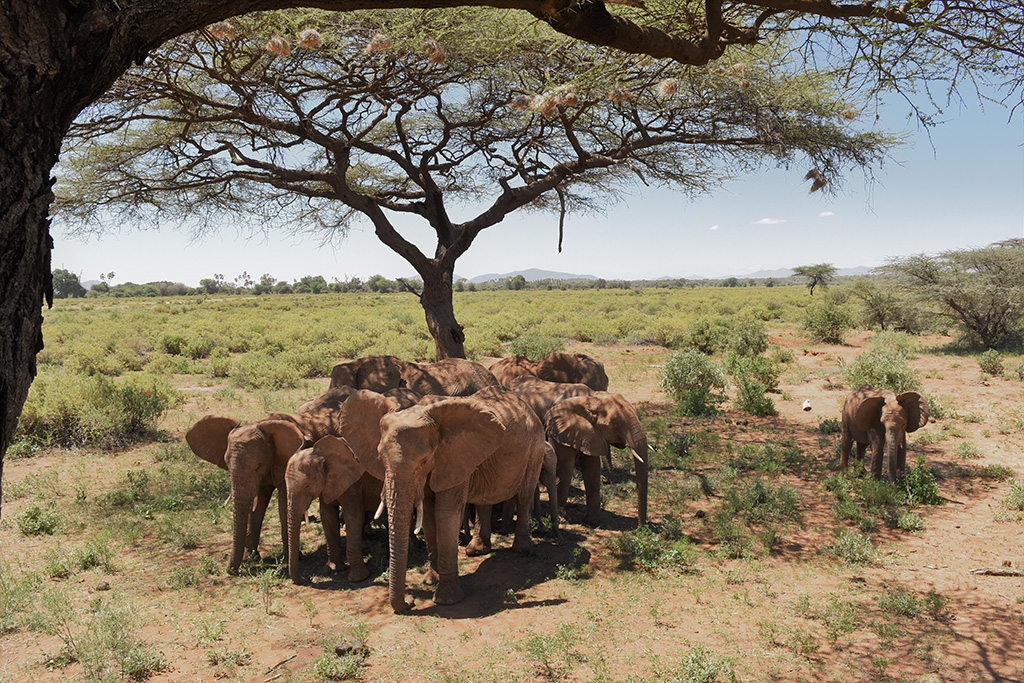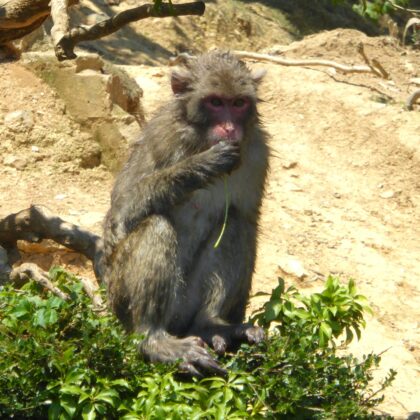The unexpected interplay among humans, elephants and worms
The latest Paper of the Month for Parasitology is Strongylid infection varies with age, sex, movement and social factors in wild African elephants
Thankfully new knowledge was gleaned from the instances when I army-crawled up to fresh dung in undrivable areas, or wrestled once again to neatly put the chronic diarrhea of R8.00 (more affectionately known as T. Hannah) into a bag. Working with a population of wild elephants that are individually known and have been followed for 20 years is a privilege, because it gives my colleagues and I the leverage to ask detailed questions about elephant ecology. One of our questions was how human disturbance affects parasitic infection in the study elephants of central Kenya, a population that experienced severe poaching between 2009 and 2013, leaving many orphans behind. Here, the word “orphan” refers to a female adolescent elephant (we included only females in the orphan portion of the study) who lost her mother.We assessed whether orphans were more infected with parasites than non-orphans to help us understand if the trauma of losing one’s mother negatively affects health.

We compared infection with internal parasitic worms among individuals to answer our parasite-related questions, specifically worms of the nematode suborder Strongylida. We chose Strongylida because the eggs laid by adult strongylid worms are shed in dung, and can be counted under a microscope. The amount of eggs in an individual’s dung reflects the degree to which they are infected with strongylids. One year, 578 samples from 75 individuals, and 2 eyes needing a stronger prescription later, we had strongylid egg counts that would provide answers.

What we found surprised us. Generally, strongylid egg counts among orphans and non-orphans did not differ, but when looking at orphans who left their family (as only some do) to live with an unrelated family, those orphans had fewer strongylid eggs in their dung, signaling they were less infected by strongylid worms than non-orphans and orphans living with relatives. We presumed orphans would have a weakened immune system. So why did we find evidence they are actually less infected? The answer, we think, lies in social behavior. Previous research shows that orphan elephants who travel with unrelated elephants receive more aggression from those unrelated elephants. Indeed, when we analyzed behavioral data, we found that elephants receiving more aggression had fewer strongylid eggs in their dung. It seems that orphans who live with unrelated elephants are less exposed to infective strongylid larvae because they are kept on the periphery of their group, therefore also on the periphery of popular social hubs heavily contaminated by old dung.

Interesting! So when humans kill a female elephant, and her orphan then decides to live with another family, aggressive behavior toward that orphan decreases her exposure to strongylid worms. For orphaned elephants, it seems that being bullied comes with a benefit.
The article Strongylid infection varies with age, sex, movement and social factors in wild African elephants by Jenna M. Parker, Shifra Z. Goldenberg, David Letitiya and George Wittemyer is available free for a month.






